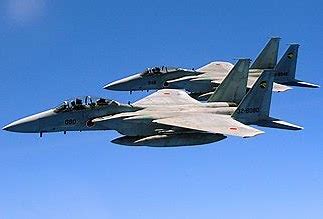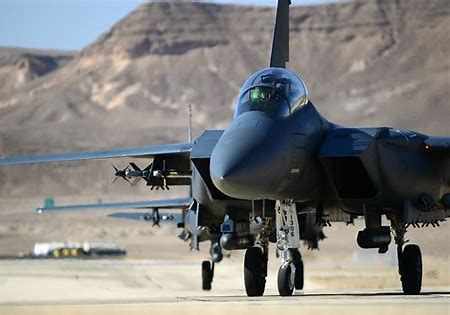
As the U.S. Air Force moves toward the future, a blend of stealth and raw firepower shapes its horizon. The service is investing in an innovative combination of the ultra-modern F-35A Lightning II and the robust F-15EX Eagle II fighters.

While the F-35 stealth jet seizes headlines with its advanced sensors and stealth capabilities, the F-15EX, known as the Eagle II, is carving out its own sky with superior firepower and unmatched speed.

The F-15EX Eagle II, a combat-ready marvel developed by Boeing, is the latest addition to the Strike Eagle family, taking to the skies as a modernized juggernaut. This next-generation fighter jet is poised to replace aging Cold War-era aircraft and complement the F-35’s stealth operations.

As the U.S. Air Force Chief of Staff General David Allvin shared in an interview with Defense One, the synergy between the stealthy F-35 and the formidable Eagle II creates a “potent force multiplier for the U.S.”

The Eagle II comes equipped with a stronger airframe, state-of-the-art avionics, and more powerful radar systems. Its engines have received a significant thrust upgrade, bolstering its weapon capacity to impressive new heights.

The Eagle II can carry up to 12 air-to-air missiles by default, doubling the F-35’s standard payload, and can be equipped with up to 22 missiles using the newly-proposed AMBER carriage rack.

One of the aircraft’s most praised features is its Joint Helmet-Mounted Cueing System II (JHMCS II), which allows pilots to lock onto targets by simply looking at them, integrating seamlessly with high-off boresight capabilities of the missiles. For ground missions, the Eagle II can carry a staggering 30,000 pounds of munitions, rivaling even the most legendary World War II bombers.

The Eagle II doesn’t just pack a punch; it’s built for electronic warfare self-reliance. Its new Electronic Warfare suite, the AN/ALQ-250 Eagle Passive Active Warning Survivability System (EPAWSS), is a comprehensive defense system capable of jamming, radar warning, threat geolocation, and more—all in a lighter package than its predecessor systems.

Despite its prominence in the Air Force’s plans, the exact number of F-15EXs to be procured is a subject of debate between the Air Force and Congress.

Originally set for 144 jets, the number was reduced to 98 but may rise to 122 if Congressional plans proceed. This would allow older F-15Es, also upgraded with EPAWSS, to fly alongside the new Eagle IIs.

Internationally, the F-15EX is spreading its wings, with the U.S. government approving sales to allies such as India and Indonesia. This global reach demonstrates not only the aircraft’s superior capabilities but also its strategic importance in reinforcing partnerships.

Despite the controversies over its necessity in the arsenals of allies such as Israel, which boasts a strong air force with F-35I stealth jets, the F-15EX represents a significant investment in the future of aerial warfare.

As defense analyst Stavros Atlamazoglou notes, this “beast of a fighter jet” offers capabilities that are essential in a near-peer operational environment.

While the F-35 stealth fighter remains a jewel in the Air Force’s crown, the F-15EX Eagle II has taken its place as the “missile truck” within the fleet.

Whether soaring alone or in concert with the F-35, the Eagle II ensures that America’s skies remain protected with an ironclad promise of speed, power, and precision for years to come.
Relevant articles:
– All You Need To Know About The F-15EX Eagle II: The U.S Air Force’s Missile Truck, SlashGear
– F-15EX Fighter Jet, US, airforce-technology.com
– F-15EX Eagle II Fighter: Does Israel Really Need This New ‘Bomb Truck’?, The National Interest
– Boeing’s Mighty F-15EX Fighter: Just A Giant (and Expensive) Missile Truck?, The National Interest
